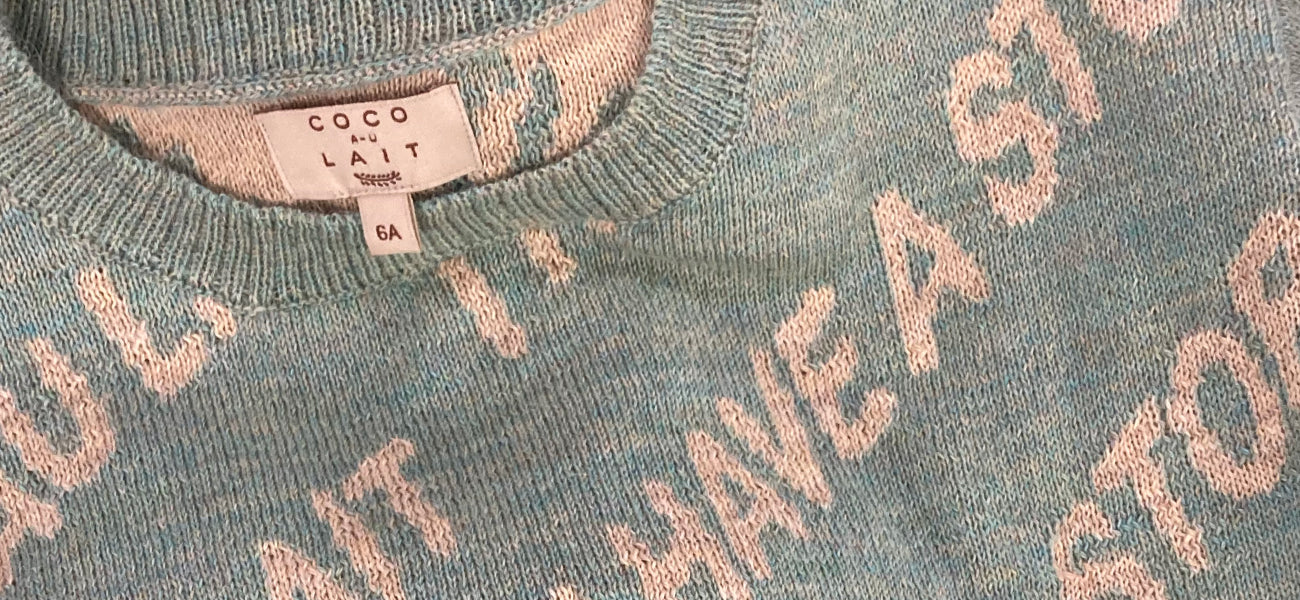Article: Children clothing sizes guide and full size conversion chart

Children clothing sizes guide and full size conversion chart
The world of children’s fashion is as diverse as the little ones who wear it. Ensuring the perfect fit for your child’s clothing is crucial for their comfort. This guide is here to help you along the way. Say goodbye to sizing guesswork with expert tips and a handy size conversion chart! Embarking on the journey of dressing your child is a delightful adventure, but navigating the world of children’s clothing sizes can be a puzzle. At Coco Au Lait, we understand the importance of a well-fitted wardrobe for your little ones. This guide is your compass through the labyrinth of children’s clothing sizes, accompanied by a trusty size conversion chart, ensuring a smooth and stress-free shopping journey. Bid farewell to the uncertainty of sizing, and join us in ensuring your child steps into every outfit with comfort and style!
Introduction: The Importance of Accurate Sizing for Children’s Clothing
Choosing the right size for your kid’s clothing is more than just a matter of aesthetics. Proper sizing directly impacts comfort, mobility, and overall satisfaction. Understanding the factors influencing size variability, differentiating between age and size, and emphasizing key measurements for children’s clothing becomes the bedrock for making well-informed decisions.
Understanding Children Clothing Sizes

Factors Influencing Size Variability
Kids are like little sprouts - they grow! Several factors play into their size variability. It’s not just a linear process; there are growth spurts, changes in body proportions, and a whole lot of unpredictability. To get the sizing spot-on, it’s essential to grasp these factors.The Difference Between Age and Size
While age can be a starting point for sizing, it’s not a one-size-fits-all solution. Children’s bodies undergo dynamic changes as they grow, and these changes aren’t uniformly dictated by age alone. Variances in height, weight, and body shape among children of the same age group are common. A child’s unique growth pattern and proportions may not align precisely with age-based sizing charts. Therefore, to ensure an optimal fit and maximum comfort, parents should take into account the specific physical characteristics of their child alongside their age.
Key Measurements for Children’s Clothing
To ensure the perfect fit, focus on key measurements like chest, waist, height, and weight. This tailored approach ensures that your little one’s wardrobe harmonizes with their distinct body shape. Take the time to measure accurately for a closet crafted to your child’s specific proportions.
Sizing by Age Range - How to measure children clothing size
Measuring children’s clothing can be a bit challenging as children’s growth rates can vary. However, general age ranges are commonly used to provide a starting point for selecting sizes. Here’s a general guideline for sizing children’s clothing by age:Sizes for 1 to 3 Years Old
For the age range of 1 to 3 years old, consider chest circumference at 52 cm. Keep in mind the height of 86 cm and hip circumference of 50 cm. Leg length is approximately 38 cm.Sizes for 3 to 5 Years Old
Moving to the 3 to 5 years old range, focus on chest circumference at 56 cm. Take into account a height of 104 cm and hip circumference of 53 cm. Leg length for this age group is approximately 44 cm.Sizes for 5 to 7 Years Old
For kids aged 5 to 7, pay attention to chest circumference at 60 cm. Take note of a height of 116 cm and hip circumference of 59 cm. Leg length is approximately 50 cm.Sizes for 7 to 9 Years Old
In the 7 to 9 years old category, consider chest circumference at 64 cm. Take into account a height of 128 cm and hip circumference of 59 cm. Leg length for this age group is approximately 56 cm.Sizes for 9 to 12 Years Old
Finally, for the 9 to 12 years old range, focus on chest circumference ranging from 68 to 74 cm. Take note of a height range of 140 to 152 cm and hip circumference ranging from 62 to 66 cm. Leg length for this age group is within the range of 63 to 69 cm.
The Comprehensive Size Conversion Chart
And now, the moment you have all been waiting for… Introducing our Size Conversion Chart, your trusted guide to ensuring a perfect fit for your little ones at every stage of their journey. At Coco Au lait, we understand that children’s growth is as unique as their personalities, and our size conversion chart is crafted to cater to the diverse needs of infants, toddlers, and pre-adolescents from 6 months to 12 years old. Our chart meticulously outlines measurements for height, chest, waist, and hips, providing a comprehensive reference to help you select the ideal size for your child. Tailored with precision and care, our Size Conversion Chart ensures that each piece from our collection embraces your child with the perfect blend of comfort and style.
Why Size Conversion is Crucial
As styles traverse borders, sizes can significantly differ from one country or brand to another. That’s where a reliable size conversion chart comes in handy, serving as a reliable point of reference. Think of it as your secret against the hassle of returns and exchanges, ensuring a smooth shopping experience. Especially in the world of children’s clothing, where growth is as unstoppable as their curiosity, this size conversion chart will become like a trusty companion for parents, helping you navigate the ever-changing needs of your little ones.
Navigating the Size Conversion Chart
Start by getting familiar with the listed measurements: height, chest circumference, hip circumference and leg length. Find the age range that matches your child and take precise measurements using a flexible tape. Match these measurements to the values on the chart to pinpoint the recommended size for the clothing item.
Tips for Accurate Conversion
Common Mistakes When Choosing Children Clothing Sizes
Overlooking Growth Spurts
Children grow rapidly, and overlooking potential growth spurts can result in quickly outgrown clothing. What fits perfectly one month might become too snug the next. To address this, it’s crucial to choose sizes that not only accommodate the current measurements but also provide a bit of room for growth. Parents often find themselves in a cycle of frequent clothing replacements if they overlook the potential of sudden spurts in their child’s height, leading to unnecessary expenses and inconvenience.
Neglecting Brand-Specific Sizing
Another pitfall is neglecting the variations in sizing standards between different brands. A size “4T” in one brand might not align with the same measurements in another. Brands often have unique sizing charts, influenced by factors such as their target demographic and design preferences. Therefore, relying on previous size experiences you had or assumptions can lead to clothing that doesn’t fit as expected. To overcome this, we recommend you to check and adhere to the specific size chart provided by Coco Au Lait when making clothing selections on our website.

